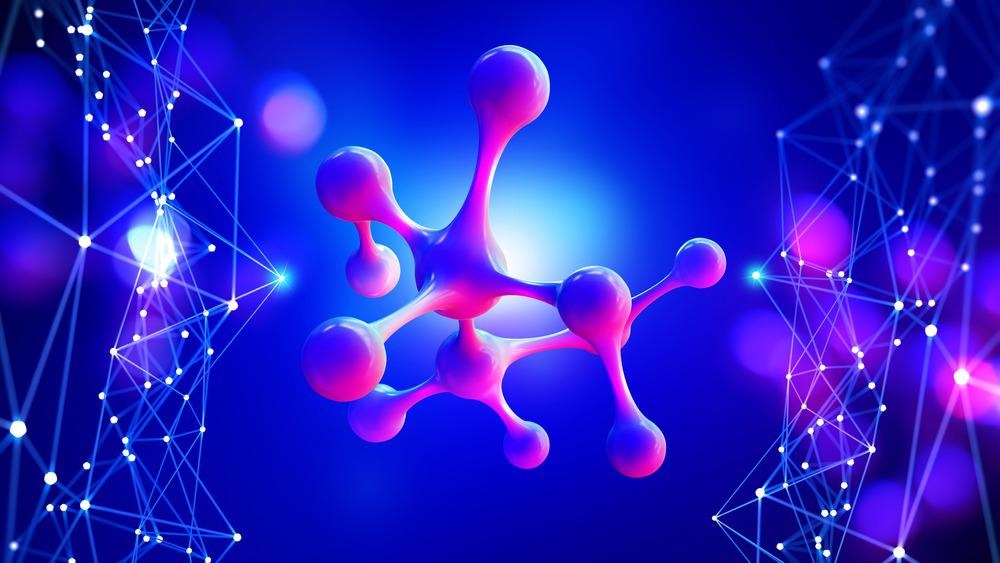The sixth assessment report from the United Nations Intergovernmental Panel on Climate Change (IPCC) leaves no doubt about the urgent need to reduce fossil fuel use to halt the disruptive effects of global warming. The authors of the report also highlighted the problem of methane contribution to greenhouse gas emissions.

The methane emissions alone contributed as much as 0.5 °C to the average temperature increase since pre-industrial times. Recent rapid advances in quantum computing open up the possibility to elucidate complex chemical reactions taking place in living organisms as a means of reducing the use of natural gas.
In the past three decades, the use of natural gas has soared by more than 50% as a relatively clean fossil energy source. In the United States and Europe, cheap and abundant natural gas supplies have helped displace coal as the primary energy source for the industry. However, there was an environmental cost to pay - natural gas extraction and usage significantly increased atmospheric methane concentrations.
Methane is the main constituent of natural gas, and its concentration in the atmosphere has more than doubled since pre-industrial times, from around 700 parts per billion (ppb) by volume to nearly 1900 ppb in 2020.
Methane emissions attract a lot of attention because of their immense impact on the climate. Even though this gas amounts only to a tiny fraction of the Earth's atmosphere (CO2 concentration is several hundred times higher), methane causes approximately 80 times more potent greenhouse effect than CO2. Eventually, methane oxidizes in the atmosphere with an average lifetime of around 12 years, compared to centuries for CO2.

Image Credit: oticki/Shutterstock.com
Environmental Effects of Synthetic Fertilizer Production
The fact that natural gas is a key feedstock for the polymer and synthetic nitrogen fertilizer industries means that any substantial emissions and leaks along the supply chain could make natural gas a significant contributor to greenhouse gas emissions.
The IPCC's 2018 report entitled 'Global Warming of 1.5°C' outlines that, amongst other greenhouse gas emissions targets, methane emissions need to be reduced by 25-35% by 2030 and by 50-60% by 2050 (compared to 2010 emission levels) to limit the global warming within 1.5°C by 2050.
The use of synthetic nitrogen fertilizers enabled rapid growth in crop productivity in the second half of the 20th century. By some estimates, nearly half of the global population heavily relies on nitrogen fertilizers for food production.
To supply the vast amounts of synthetic nitrogen fertilizers used globally, the modern fertilizer industry is reliant upon the Haber-Bosch process. It is an energy-hungry process that converts atmospheric nitrogen and natural gas into ammonia in the presence of metal catalysts at a temperature of 450°C and pressure over 200 bar.
Synthetic fertilizer manufacturing consumes 5% of the global natural gas supply both as a feedstock and an energy source. Greenhouse gasses emitted during nitrogen fertilizer production account for approximately 40% of the total carbon footprint of the crop-based foodstuff.
The chemical reaction that feeds the world - Daniel D. Dulek
Video Credit: TED-Ed/YouTube.com
Biological Nitrogen Fixation as a Route to Sustainability
Some bacteria can utilize atmospheric nitrogen through a process termed nitrogen fixation that occurs at room temperature and atmospheric pressure. The catalyst used in biological nitrogen fixation is an enzyme called nitrogenase, where an active site containing iron-molybdenum cofactor (FeMoco) can split the triple bond between the atoms in the nitrogen molecule at ambient conditions and produce two ammonia molecules.
Many industrial and academic research groups recognize the importance of this process for sustainable fertilizer production. Yet, the exact mechanism of nitrogen fixation at the FeMoco site remains unknown as the existing experimental results do not provide enough details about the complex chemical reaction.
Intrinsic limitations of the traditional quantum chemistry methods, on the other hand, impede theoretical studies of FeMoco nitrogen fixation.
Quantum Simulations of Complex Chemical Systems
According to a group of scientists from ETH Zurich and Microsoft Research, led by Dave Wecker and Matthias Troyer, quantum computing is the tool that can provide the answers to quantum chemistry problems that are beyond the reach of traditional computational methods. The researchers estimated that several quantum computers, with up to 100 physical qubits each, working in parallel (for error correction) could solve the FeMoco nitrogen fixation mechanism within a month.
Despite this, several important questions are still outstanding. With several tens of qubits, existing quantum computers are far from sufficiently advanced to simulate the FeMoco problem.
Quantum computing is one of the fastest developing fields in modern physics. Companies like Google, Microsoft, D-Wave, and IBM are working to create more sophisticated quantum computers together with faster algorithms suitable for quantum simulations. IBM's current largest quantum computer contains 65 physical qubits, and the company's ambition is to build a 1000-qubit system by 2023.
The performance of quantum computers also depends on how stable the qubits in the system are. To complete a computational operation, qubits need to maintain their quantum state for a long enough period, referred to as coherence time. Qubits are extremely sensitive to external factors, such as stray electromagnetic pulses. The more qubits are added to a system, the harder it is to maintain long coherence times.

Image Credit: Yurchanka Siarhei/Shutterstock.com
Emerging Feasibility of Real-World Quantum Computing Applications
Regarding the FeMoco problem, Matthias Troyer and his colleagues have established that groups of physical qubits can act collectively as a single logical qubit. As qubit coherence times increase, fewer physical qubits will be necessary to create one logical qubit.
The findings of the Swiss-American research team also addressed the question about the exact methodology of quantum simulations applicable to computational chemistry.
Notably, the scientist set a commercially relevant target for quantum computing, demonstrating the technology's ability to provide answers to scientifically and economically relevant problems and mitigate the effects of climate change.
--
Industrial Response to Climate Change
This article is a part of the IPCC Editorial Series: Industrial Response to Climate Change, a collection of content exploring how different sectors are responding to issues highlighted within the IPCC 2018 and 2021 reports. Here, Quantum showcases the research institutions, industrial organizations, and innovative technologies driving adaptive solutions to mitigate climate change.
References and Further Reading
IPCC. (2018) Summary for Policymakers. Global Warming of 1.5°C. An IPCC Special Report on the impacts of global warming of 1.5°C above pre-industrial levels and related global greenhouse gas emission pathways, in the context of strengthening the global response to the threat of climate change, sustainable development, and efforts to eradicate poverty. Available at: https://www.ipcc.ch/
IPCC. (2021) Summary for Policymakers. Climate Change 2021: The Physical Science Basis. Contribution of Working Group I to the Sixth Assessment Report of the Intergovernmental Panel on Climate. Available at: https://www.ipcc.ch/report/ar6/wg1/downloads/report/IPCC_AR6_WGI_SPM.pdf
Zhou, X., et al. (2019) Estimation of methane emissions from the U.S. ammonia fertilizer industry using a mobile sensing approach. Elementa: Science of the Anthropocene 7, 19. Available at: https://online.ucpress.edu/elementa
A. Borunda (2020) Natural gas is a much 'dirtier' energy source than we thought [Online] www.nationalgeographic.com Available at: https://www.nationalgeographic.com/science/article/super-potent-methane-in-atmosphere-oil-gas-drilling-ice-cores
Cornel University (2019) Fertilizer plants emit 100 times more methane than reported [Online] www.sciencedaily.com Available at: https://www.sciencedaily.com/releases/2019/06/190606183254.htm
Editorial (2021) Control methane to slow global warming — fast [Online] www.nature.com Available at: https://www.nature.com/articles/d41586-021-02287-y
Reiher, M., et al. (2017) Elucidating reaction mechanisms on quantum computers. Proc. Natl. Acad. Sci. U.S.A. 114 (29) 7555-7560. Available at: https://doi.org/10.1073/pnas.1619152114
K. Bourzac (2017) Chemistry is quantum computing's killer app [Online] https://cen.acs.org/ Available at: https://cen.acs.org/articles/95/i43/Chemistry-quantum-computings-killer-app.html
Disclaimer: The views expressed here are those of the author expressed in their private capacity and do not necessarily represent the views of AZoM.com Limited T/A AZoNetwork the owner and operator of this website. This disclaimer forms part of the Terms and conditions of use of this website.